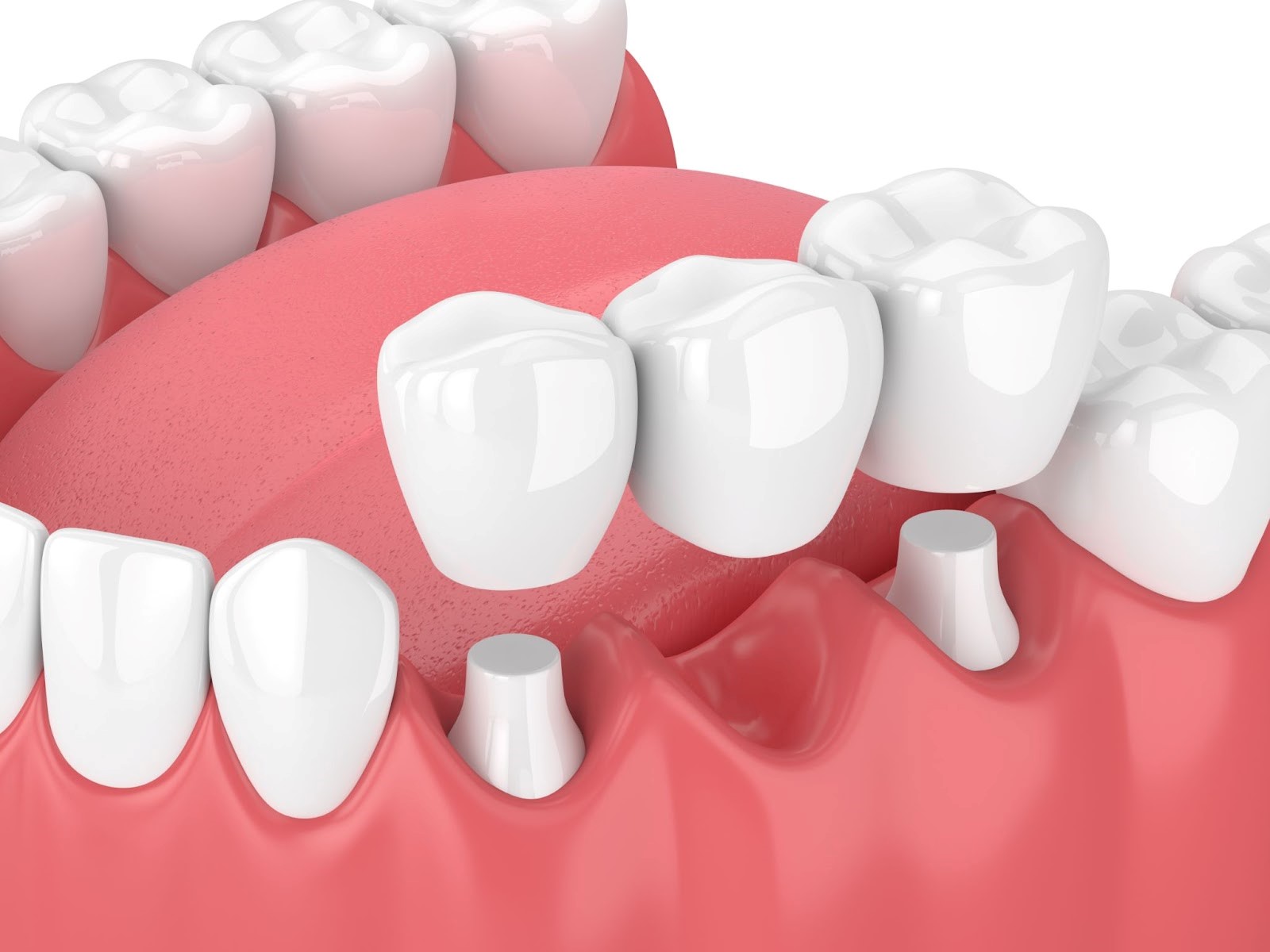Missing a tooth is more than an aesthetic issue, it can impact your oral health and the functionality of your mouth. Gaps left by missing teeth can cause your teeth to shift, change bite pressure, and can cause a gradual degradation of the jawbone.
Dental bridges are a solution for replacing one or more missing teeth. They bridge the gap where teeth are missing, using a combination of false teeth and crowns to restore both the appearance and function of your teeth.
Exploring Dental Bridges
A dental bridge is a custom-made way of replacing missing teeth. It is made up of one or more false teeth, known as pontics, which are held in place by crowns attached to the teeth adjacent to the empty space. This assembly spans, or “bridges,” the gap in your smile, hence the name.
How Dental Bridges Work
The process starts with preparing the adjacent teeth on either side of the gap. These teeth are reshaped to allow the placement of crowns, which serve as anchors for the bridge. Once the crowns are securely attached, the pontics fills the space left by the missing tooth (or teeth), restoring functionality and aesthetics. The entire structure is custom-made to ensure it matches your natural teeth, both in function and appearance.
Types of Dental Bridges
There are a few types of dental bridges, each suitable for different scenarios:
- Traditional Bridges: These are the most common type and are used when there are natural teeth on both sides of the gap. They involve creating a crown for the teeth on either side of the missing tooth, with a pontic in between.
- Cantilever Bridges: Similar to traditional bridges, but the pontic is supported by a crown on only one side. This is often used when there are teeth on only one side of the lost tooth.
- Maryland Bridges: These bridges use a metal or porcelain framework bonded onto the backs of the adjacent teeth, which is less invasive as it does not require filing down the adjacent teeth like traditional bridges.
Materials Commonly Used
Depending on the aesthetic needs, the location of the missing tooth, and budget, dental bridges can be created from different materials.
- Porcelain or Ceramic: These materials can be matched to the colour of your natural teeth and are preferred for their aesthetic qualities.
- Metal Alloys: These are stronger and more durable but are usually used where aesthetics are less of a concern, such as in the back of the mouth.
- Combination of Materials: Sometimes, a metal alloy is used for strength, and porcelain is bonded to the exterior for a natural look.
The Role of Dental Crowns in Bridges
Dental crowns play an important role in the construction and function of dental bridges. Their role is to serve as anchors or ‘abutments’.
When creating a dental bridge, the teeth adjacent to the missing tooth gap are prepared and reshaped to receive crowns. These crowns provide the necessary support to securely hold the bridge in place. Once fitted, the crowns are cemented to the prepared teeth, and the pontic (the artificial tooth) is suspended between them, bridging the gap.
Protecting Adjacent Teeth
Beyond supporting the bridge, dental crowns also protect the natural teeth that they cover. By covering these teeth with crowns, they are safeguarded against wear and decay. This is important because these teeth are subjected to increased stress from the bridge, as they bear the force of biting and chewing that is transmitted through the pontic.
Aesthetic and Functional Harmony
Crowns used in dental bridges are designed to match the colour and shape of your natural teeth, making the bridge look as natural as possible. The crowns and the pontics are created to align with the biting and chewing surfaces of your existing teeth, which promotes a balanced bite and prevents issues such as jaw pain or further tooth damage.
Same-Day Crown and Bridge Work at Granite Belt Dental
At Granite Belt Dental, we pride ourselves on leveraging the latest advancements in dental technology to enhance patient care and improve treatment outcomes. One of the most significant technological enhancements we have adopted is the CEREC Primescan and milling unit, which allows us to offer same-day crown and bridge work.
The CEREC Primescan and milling unit uses high-resolution digital scans to create an accurate 3D model of your teeth, which is then used to create dental crowns or bridges. The entire process—from digital impression to the placement of the final restoration—is completed in a single appointment.
Benefits of Same-Day Procedures for Patients
Same-day crown and bridge work offers numerous benefits for patients, including:
- Convenience: The entire procedure, from start to finish, is completed in one visit, saving you time and reducing the need for multiple appointments.
- Comfort: With digital impressions, there is no need for uncomfortable traditional dental putty used in making impressions.
- Immediate Results: You leave the office with your final dental bridges or crowns in place, without the need for temporary solutions and additional waiting periods.
- High-Quality Materials: The ceramics used are durable and colour-matched to your natural teeth, ensuring a restoration that is both strong and visually appealing.
- Precision: Digital mapping and on-site milling provide a superior fit, which can improve the function and longevity of the restoration.
Book Your Dental Bridge Appointment Today
If you’re considering dental crowns or bridges, don’t hesitate to contact Granite Belt Dental. Our team is ready to guide you through your options and help you achieve the best possible outcome for your dental health. Book a consultation today to learn more about how we can restore the beauty and functionality of your smile. Visit our website or call us directly to schedule your appointment. Let us help you take the first step towards a brighter, more confident smile!


